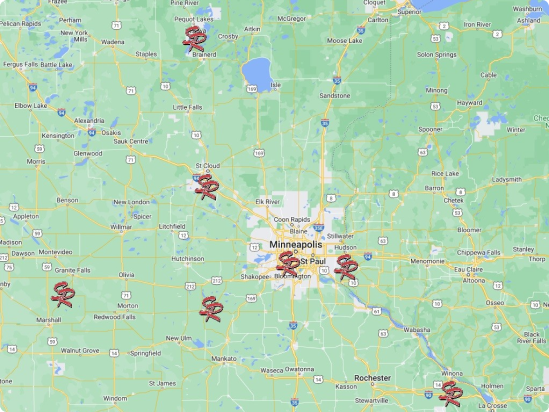Everyone has heard about it, but have you seen the damage hail can cause on your roof? The even more important question to ask is, would you be able to identify any hail damage on your roof after a severe storm? There are a lot of options for roofing materials, and while some are better suited to stand up to severe weather, hail damage is always a possibility.
The damage hail can cause on your roof can look different depending on the type of roofing material you have. Here’s how to identify hail damage and determine if it’s time for a roofing replacement.
Hail Damage on Asphalt Shingles
Asphalt shingles are the most common roofing material. They are also susceptible to damage from hail. When checking for hail damage on an asphalt roof, look for cracked or chipped shingles. You can also look for small bare spots where the granules of the shingles have flaked off. These granules can also be present in your gutters and on your lawn.
It’s also a good idea to check for missing shingles that may have blown off due to severe winds.
Wood Shakes
Although wood roofs are durable, they are not immune to hail damage. When inspecting your wooden roof, it’s important to differentiate between normal aging/weathering and damage due to hail. The biggest thing to look out for is cracking on the shingles, which is indicative of hail damage. It’s normal for wood shakes to turn gray over the years; it occurs due to oxidation over time. However, the underside of wood shakes is generally red, so if you see any red through a crack on a shingle, the crack is large enough to have split the shake all the way through, which means water can penetrate the materials under the wood shakes.
Slate or Clay/Concrete Tiles
While not overly common in the Midwest, slate, clay, and concrete tiles are known to be found in areas where hail damage is a large concern. If you have any of these types of roofing materials, you should be looking for chips, cracks, and splits in the tiles. These types of tiles will easily show hail damage as they tend to shatter when being struck by hail that is large enough to damage it. In many cases, these areas of damage are accompanied by splatter marks on the adjacent tiles.
Metal Roofing
Metal roofing is by far the most durable roofing material and is thus the most resilient when it comes to hail damage. However, there are rare, very severe storms with hail that are large enough to damage these types of roofs. If you have a metal roof, the best thing to look for in terms of hail damage is denting on the metal sheets themselves. Some hail is large enough to dent but generally does not penetrate this type of roofing material.


